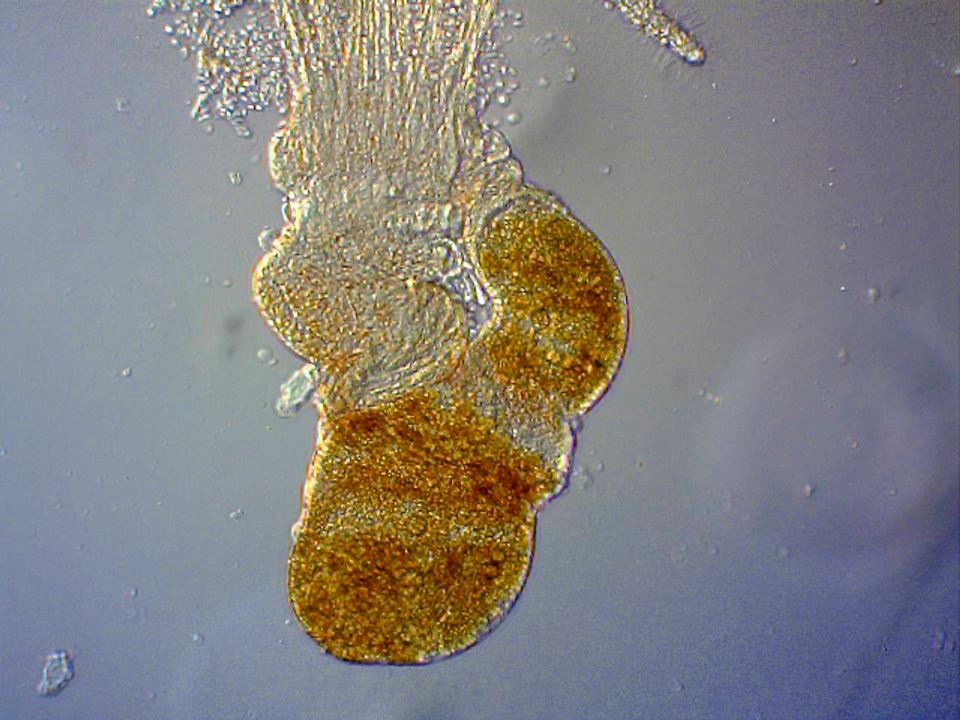Food capture and Digestive system

|
| Photo: Bridget Bradshaw, Heron Island, 2013. |

The digestive system begins at the mouth, which is at the base of the lophophore. After food is swept towards the mouth using the water currents created by the lateral cilia, further suction is created by the inward beating of cilia within the pharynx, which draws smaller particles into the mouth, while larger particles may be suddenly ingested by a rapid dilation of the lower pharynx (Ryland 1970).
They are also able to reject particles by closing their mouth or flicking their tentacles (which can also move favorable particles (see FUTURE RESEARCH) towards the mouth—picture a basketball bouncing on the rim of the hoop). In gymnolaemates, a bolus of food forms in the mouth until it reaches a critical size. At this point it moves into a ciliated, muscular, sucking pharynx to a tubular, non-ciliated esophagus and finally into the characteristic U-shaped gut comprising of three sections: the cardia, the pylorous (ciliated), and the cecum. The cilia of the pylorus rotate the bolus and edible particles are phagocytosed by stomach epithelial cells. Thus digestion is both extra and intracellular within the cecum of the stomach. Waste then exits through the anus, located near the base of the mostdorsal pair of tentacles (Ryland 1970).
|